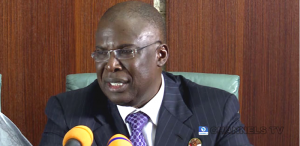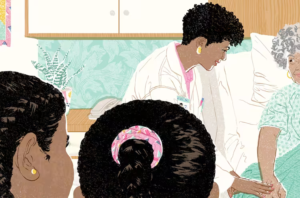The arrival of federal agents in Portland three weeks ago to crack down on racial justice protests fueled tensions there, and helped push the city to the forefront of coverage of the nation’s racial justice movement.
As one of the whitest big cities in the America, Portland’s outsize role in the nationwide protests may strike some as surprising.
Oregon has a long history of entrenched racism, dating back to its statehood in 1859, when the state constitution barred Black people from entering or living there. Yet the recent protests in Portland are part of another long history of black and white Oregonians combating that lingering racism, says Lisa Bates, an associate professor of urban studies at Portland State University.
“As much as there is far-right activity in Oregon and Portland, there’s also left activity,” Bates says. “There’s also always been a left movement here, and a history of pretty significant protests.”
She points to the white anti-racist movements and the “Abolish ICE” protests in 2018.
“Portland is known as ‘Little Beirut’ because of its tendency toward uprising,” she says.
Here are excerpts from Bates’ interview on All Things Considered.
While many people think of the Ku Klux Klan as a Southern phenomenon, it had a huge presence in Oregon in the early 20th century. Tell us about that.
In the Portland area, many of the elected leaders, sheriffs, etc., were active members of the KKK, and that history of white nationalist organizing has persisted. In the ’80s and ’90s, Oregon was seen as a white homeland for people who believed in the idea of a racial holy war, and there are settlements throughout the state of people who are pursuing that kind of white homeland idea.
How has that deep legacy of racism played out in the last few decades?
After that history, we might wonder how did Black people really end up living in Portland. Black folks are about 6% of Portland’s population, and many of these are families who were brought to work in the Kaiser Shipyards during World War II, and after World War II remained in the city — despite ongoing civil rights battles, particularly around police.
I would point to a couple of significant incidents in the 1980s where Portland police officers dumped dead possums on the door of a Black-owned business. In the mid-1980s, after [police killed] a Black man, [Lloyd] “Tony” Stevenson, with a chokehold, the chokehold was banned and the police union distributed T-shirts to officers that said “Smoke ‘Em, Don’t Choke ‘Em,” with the image of a gun.
Do you see these protests today as a direct outgrowth of, or reaction to, the long history of racism and white supremacy that has been the building blocks of Oregon history?
For some people, yes. I think that we’ve had a number of protests over 15 years here about the problem of white supremacy in institutions, and of course that’s at the center of what’s happening today.
Over the past two months, I’ve seen marches for Black trans lives, we’ve had movement around Black victims of intimate partner violence. There are actions happening here almost every day, not all of which are focused around the [Multnomah County] Justice Center and the federal [Mark O. Hatfield U.S. Courthouse], because there’s movement-building that’s happening — from youth to elders among Black, indigenous and other people of color here, as well as allies and accomplices.
Christopher Intagliata and Dave Blanchard produced and edited this interview for broadcast. Emma Bowman adapted it for the Web.
Copyright 2020 NPR. To see more, visit NPR.




